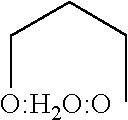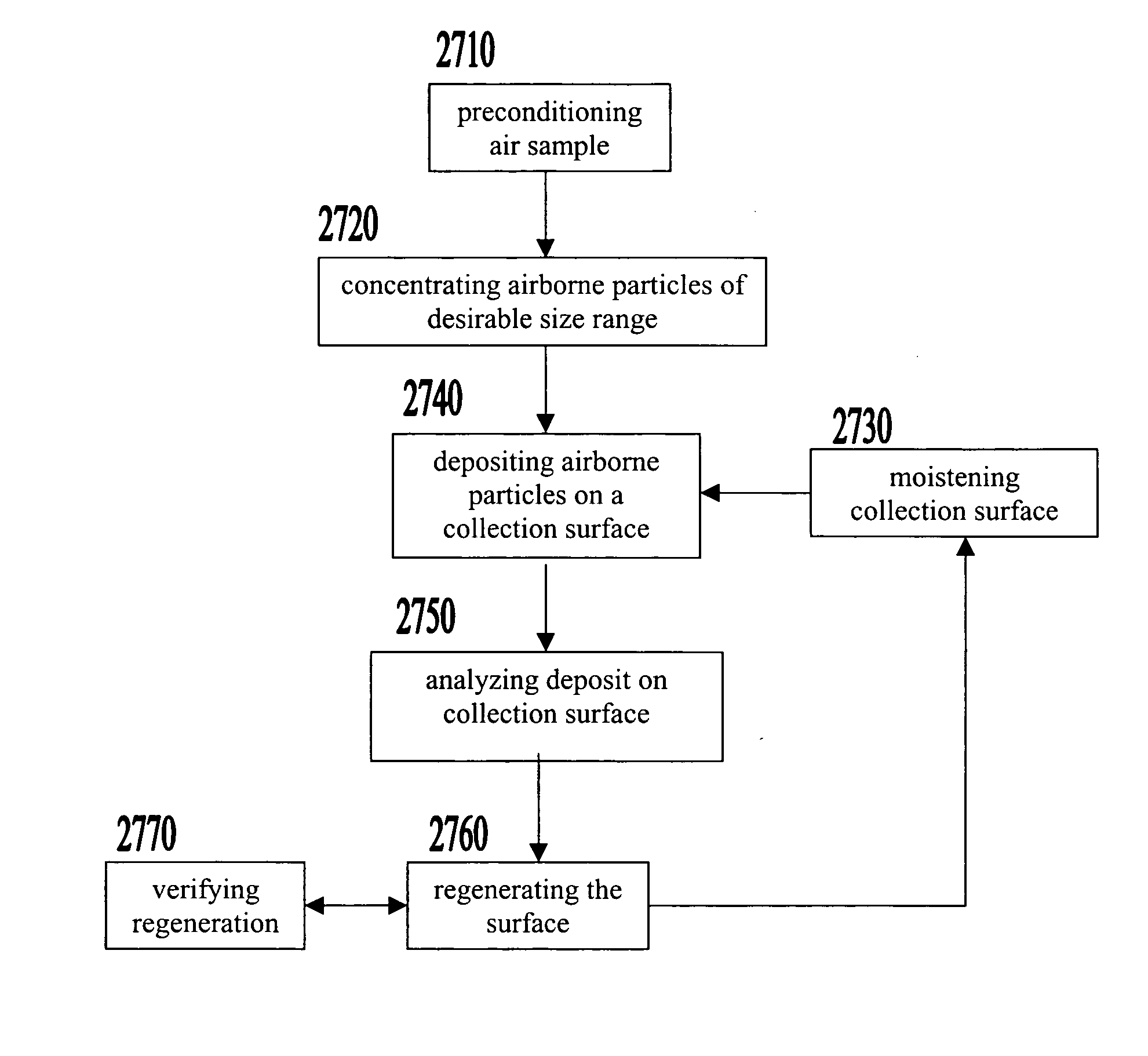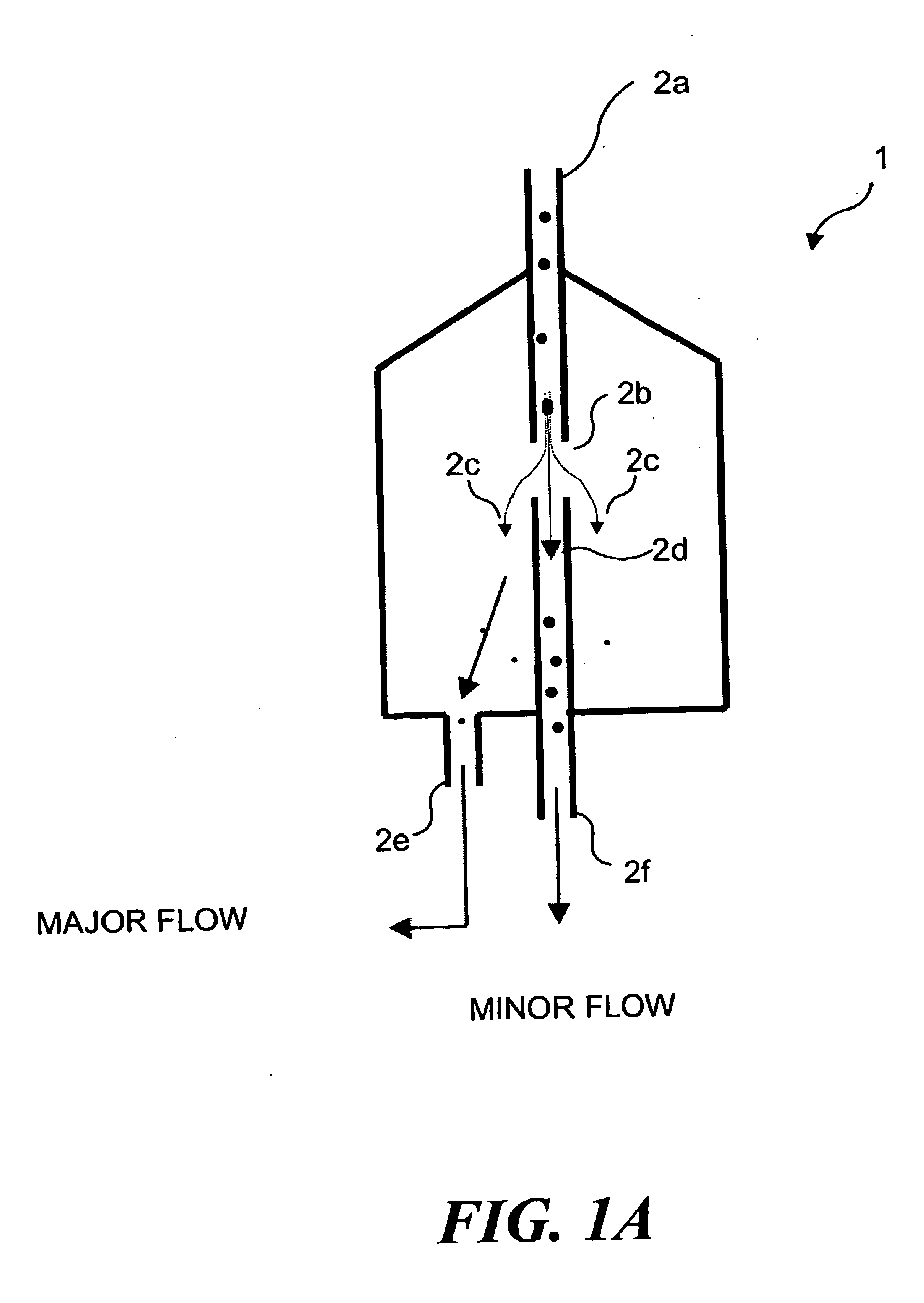Methods and devices for continuous sampling of airborne particles using a regenerative surface
a regenerative surface and airborne particle technology, applied in the direction of fluid speed measurement, electric signalling details, feed/discharge of settling tanks, etc., can solve the problems of reducing the accuracy of measurement of total particulate mass concentration and size-fractionation, particulate "wall loss, and reducing the volume of material, so as to increase the volume of material and reduce the effect of cos
- Summary
- Abstract
- Description
- Claims
- Application Information
AI Technical Summary
Benefits of technology
Problems solved by technology
Method used
Image
Examples
Embodiment Construction
[0355] Detection of Aerosolized Fluorescent Particles Using a Regenerative Surface
[0356] A regenerative surface air sampler based was constructed. The impaction plate was made of aluminum, and was shaped as a lobed cam with three regenerative surfaces. Components of the system included an inertial impactor, a fluorescence detector, and a felt wheel brush surface regenerator. The fluorescence detector was arranged essentially as depicted in FIG. 28, with transmission characteristics of the dichroic mirror, excitation and emission filters as shown in FIG. 30. The UV LED emission was specified to be about 375+ / -3 nm.
[0357] Biological aerosol was simulated with a fluorescent powder (UVPN UV Powder sold by LDP, LLC (www.maxmax.com)). It was aerosolized by tapping an open envelope of the powder three times, releasing approximately 100 milligrams of the powder into the air several feet away from the air inlet to the sensor.
[0358] Results of the test are shown in FIG. 31. As can be seen, th...
PUM
 Login to View More
Login to View More Abstract
Description
Claims
Application Information
 Login to View More
Login to View More - R&D
- Intellectual Property
- Life Sciences
- Materials
- Tech Scout
- Unparalleled Data Quality
- Higher Quality Content
- 60% Fewer Hallucinations
Browse by: Latest US Patents, China's latest patents, Technical Efficacy Thesaurus, Application Domain, Technology Topic, Popular Technical Reports.
© 2025 PatSnap. All rights reserved.Legal|Privacy policy|Modern Slavery Act Transparency Statement|Sitemap|About US| Contact US: help@patsnap.com



